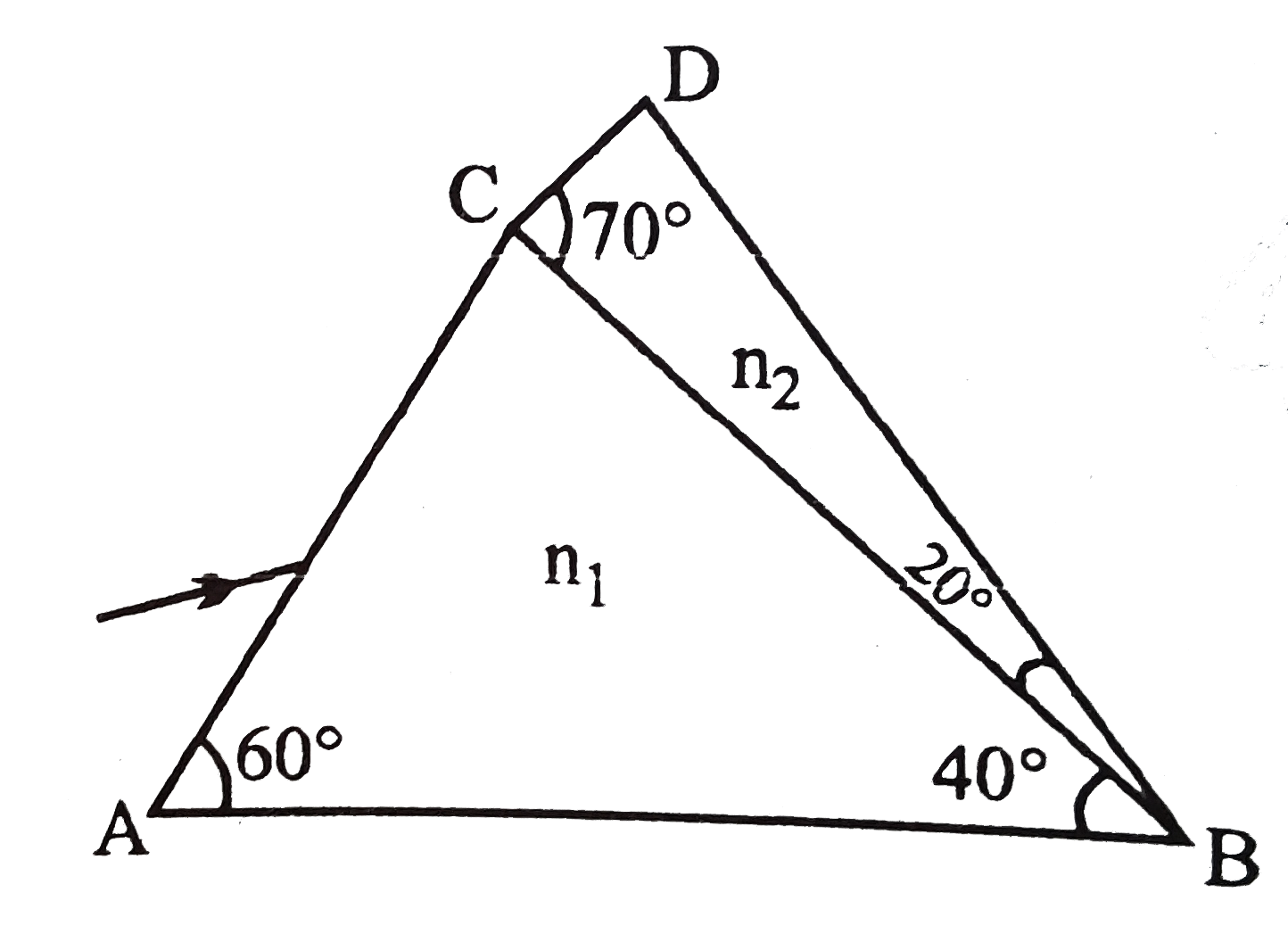A system of binary stars of mass mA and mB are moving in circular orbits of radii rA and rB respectively. If TA and TB are at the time periods of masses mA and mB respectively thenSolution in Gujrati
if TA>TB then RA>RB
if TA>TB then MA>MB
(TATB)2=(RARB)3
TA=TB
The correct Answer is:D
_E01_138_S01.png)
Figure shows a binary star system:
The gravitaional force of attraction between the stars will provide the necessary centripetal forces. In this case angular velocity of both stars is the same. Therefore time period remains the same.
(ω=2πT)
Topper's Solved these Questions
- GRAVITATIONBOOK - ALLEN CHAPTER - GRAVITATIONEXERCISE - Illustration
34 Videos
- GRAVITATIONBOOK - ALLEN CHAPTER - GRAVITATIONEXERCISE - BOX-1
3 Videos
- GRAVITATIONBOOK - ALLEN CHAPTER - GRAVITATIONEXERCISE - Exercise 5 A (Previous Year Questions)
26 Videos
- GEOMETRICAL OPTICSBOOK - ALLEN CHAPTER - GEOMETRICAL OPTICSEXERCISE - subjective
14 Videos
- KINEMATICS-2DBOOK - ALLEN CHAPTER - KINEMATICS-2DEXERCISE - Exercise (O-2)
47 Videos
Similar Questions
Two spherical balls of mass 10 kg each are placed 100 m apart. Find the fraviational force of attraction between them.
View SolutionIf four different masses m1,m2,m3 and m4 are placed at the four corners of a square of side a, the resultant gravitational force on a mass m kept at the centre is
View SolutionIf suddenly the gravitational force of attraction between earth and satellite revolving around it becomes zero, then the satellite will
View SolutionA prism of refractive index n1 & another prism of reactive index n2 are stuck together without a gap as shown in the figure.The angle of the prisms are as shown. n1&n2depend onλ,the wavelength of light according to n1=1.20+10.8×104λ2&n2=1.45+1.80×104λ2 where λ is in nm.

(i)Calculate the wavelength λ0for which rays incident at any angle on the interfaceBCpass through without bending at that interface.
(ii) for light of wavelength λ0,find the angle of incidencei on faceACsuch that the deviation produced by the combination of prism is minimum.
View SolutionA particle is moving in xy-plane .At certain instant the components of its velocity and acceleration are as follows ux=3m/s,uy=4m/s,ax=2m/s2anday=1m/s2. The rate of change of speed at this moment is
View SolutionIf for two gases of molecular weights M_(A) and M_(B) at temperature T_(A) and T_(B) , respectively, T_(A)M_(B)=T_(B)M_(A) , then which property has the same magnitude for both the gases?
View SolutionFind the relation between the gravitational field on the surface of two planets A and B of masses m_(A), m_(B) and radii R_(A) and R_(B), respectively if a. they have equal mass. b. they have equal (uniform)density.
View SolutionTwo satellites A and B of masses m_(1) and m_(2)(m_(1)=2m_(2)) are moving in circular orbits of radii r_(1) and r_(2)(r_(1)=4r_(2)) , respectively, around the earth. If their periods are T_(A) and T_(B) , then the ratio T_(A)//T_(B) is
View SolutionA system of binary stars of mass m_(A) and m_(B) are moving in circular orbits of radii r_(A) and r_(B) respectively. If T_(A) and T_(B) are at the time periods of masses m_(A) and m_(B) respectively then
View SolutionTwo stars of mass m1 and m2 are parts of a binary star system. The radii of their orbits are r1 and r2 respectivey, measured from the centre of mass of the system. The magnitude of gravitational force m1 exerts on m2 is
View SolutionTwo stars of mass M1&M2 are in circular orbits around their centre of mass The star of mass M1 has an orbit of radius R1 the star of mass M2 has an orbit of radius R2 (assume that their centre of mass is not acceleration and distance between starts is fixed)
(a) Show that the ratio of orbital radii of the two stars equals the reciprocal of the ratio of their masses, that is R1/R2=M2/M1
(b) Explain why the two stars have the same orbital period and show that the period
T=2π(R1+R2)3/2√G(M1+M2) .
View SolutionA binary star system consists of two stars of masses M1 and M2 revolving in circular orbits of radii R1 and R2 respectively. If their respective time periods are T1 and T2, then
View SolutionA binary star system consists of two stars A and B which have time periods T_(A)" and "T_(B) radius R_(A)" and "R_(B) and masses m_(A)" and "m_(B) which of the three quantities are some for the stars. Justify.
View Solutionएक युग्म तारा (Double star) निकाय में स्थित तारों A व B के परिक्रमण काल क्रमश: TA व TB है। इनकी त्रिज्याएँ व द्रव्यमान क्रमश: RA,RB तथा MA,MB हैं। सही विकल्प चुनिए
View SolutionTwo stars of masses m1andm2 are parts of a binary solar system. The radii of their orbits are r1andr2 respectively. The magnitude of the gravitational force m1 exerts on m2 is:
View SolutionTwo stars of masses m1andm2 are parts of a binary solar system. The radii of their orbits are r1andr2 respectively. The magnitude of the gravitational force m1 exerts on m2 is:
View Solution
